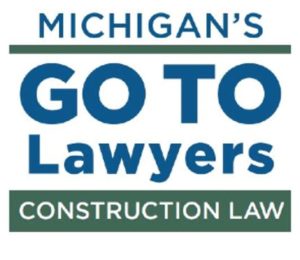The DOL has issued a temporary rule providing further guidance on the Families First Coronavirus Response Act (“FFCRA”). While the temporary rule is not yet final and its terms may change, it expands and clarifies prior guidance regarding implementation of and compliance with FFCRA.
Must an employer compensate an employee teleworking for all time between the performance of the first and last principal activity?
The general rule is that employers must pay employees for all time between their first principal work activity and their last. There are obviously some exceptions (e.g., uninterrupted breaks of at least 30 minutes), but time spent going to the restroom, chatting by the watercooler and playing on-line solitaire will generally be deemed “compensable work time” that must be compensated. This is one of the concerns employers have long had about telework arrangements: interruptions at home can swallow up a workday. FFCRA, which encourages employers and employees to implement highly flexible telework arrangements that allow employees to perform work while tending to family and other responsibilities, waives that rule where the telework arrangement is due to COVID-19. Employers do not need to pay for the time spent on those domestic or other non-business interruptions.
Does a state shelter-in-place order count as a state quarantine or isolation order pursuant to the FFCRA?
Yes, but . . . . FFCRA requires an employee receive paid sick leave if they cannot work or telework because they are subject to a Federal, State, or local COVID-19 quarantine or isolation order. DOL has clarified that quarantine or isolation orders include a broad range of governmental orders, including orders that advise citizens to shelter in place. However, for an employee to qualify for paid sick leave due to a shelter-in-place order, the employee must have been able to work or telework “but for” being required to comply with the order. This means an employee does not qualify for paid sick leave if the employer does not have work for them, even if the lack of work is due to the shelter-in-place order. This seems to resolve the “chicken or egg” problem presented by Governor Whitmer’s E.O. 2020-21 which simultaneously prohibits non-essential workers from going to work and prohibits employers from conducting nonessential operations. The prohibition against the employer – which results in no work being available – is the deemed cause of the employee’s inability to work, not the prohibition against the employee going to work. Thus, restaurant workers, for example, will not generally be eligible for paid sick leave.
Does an employee qualify for paid sick leave pursuant to FFCRA if a doctor advises them to stay at home?
An employee qualifies for paid sick leave pursuant to FFCRA if they have been advised by a health care provider to self-quarantine for a COVID-19 reason. The advice to self-quarantine must be based on the health care provider’s belief that the employee has COVID-19, may have COVID-19, or is particularly vulnerable to COVID-19. Furthermore, the self-quarantine advice must prevent the employee from working or teleworking. An employee may not take paid sick leave to self-quarantine without seeking a medical diagnosis; personal concern about becoming infected will not suffice. [NOTE: In Executive Order 2020-36 Governor Whitmer prohibited discharge, discipline or retaliation against any employee who stays home “when he or she is at particular risk of infecting others with COVID-19.” Such workers must be treated as though they are on medical leave under the Michigan Paid Medical Leave Act (though no extra paid leave is mandated). Workers who have tested positive for the virus, or who display any of the principal symptoms (fever, atypical cough or atypical shortness of breath) or who have had “close contact” (defined as being within 6 feet of the person for a prolonged period of time) with such an individual are directed to stay home for certain periods and are protected by the Order for doing so. Importantly, no health care provider certification is required for the protections of the Order to attach. However, enforcement is purely administrative; no private cause of action is granted to employees who claim their employer violated the Order.]
What must an employee show to qualify for paid sick leave to care for their child?
An employee must show they actually need to (and are) caring for their child. Generally, an employee does not need to take leave if another suitable individual is available to provide care for the child.
Can an employer require an employee to use accrued leave under the employer’s policies concurrently with expanded family and medical leave pursuant to the FFCRA?
Yes, an employer may require an employee to use accrued leave such as vacation or personal leave or paid time off concurrently with the expanded family and medical leave pursuant to the FFCRA. However, doing so will not increase the tax credits otherwise available to defray the cost of the leave.
When is a small business exempt from the FFCRA requirements to provide paid leave?
An employer with less than 50 workers is exempt from the requirement to provide such leave when:
- such leave would cause the small employer’s expenses and financial obligations to exceed available business revenue and cause the small employer to cease operating at a minimal capacity;
- the absence of the employee or employees requesting such leave would pose a substantial risk to the financial health or operational capacity of the small employer because of their specialized skills, knowledge of the business, or responsibilities; or
- the small employer cannot find enough other workers who are able, willing, and qualified, and who will be available at the time and place needed, to perform the labor or services the employee or employees requesting leave provide, and the labor or services are needed for the small employer to operate at a minimal capacity.
The employer may only deny paid sick leave or expanded family and medical leave to those otherwise eligible employees whose absence would cause the small employer’s expenses and financial obligations to exceed available business revenue, pose a substantial risk, or prevent the small employer from operating at minimum capacity.
What health care providers are exempt from FFCRA’s leave provisions?
Although FFCRA appears to incorporate the specific and limited definition of “health care provider” found in the FMLA and its regulations – basically a physician, physician’s assistant, nurse practitioner, licensed social worker and perhaps a few other licensed providers – the proposed regulations under FFCRA exempt from coverage a breath-taking range of workers. Any employee at a doctor’s office, hospital, health care center, clinic, medical school, local health department or agency (including community mental health providers), nursing facility, home health care provider, medical testing lab, pharmacy or “any similar institution” may be exempted. Further, the regulations extend this exemption to individuals employed by entities that contract with any of these institutions to provide services or to maintain operations of the facility where that individual’s services are provided. This includes persons employed by entities providing medical services or products or “otherwise involved in the making of COVID-19 related medical equipment, tests, drugs, vaccines, diagnostic vehicles or treatments”; and it permits governors to expand this definition further in their own states. [NOTE: There are anecdotal reports that DOL personnel are advising first tier health care providers that if they exempt any of their workers from the leave provisions of the FFCRA, they must exempt all employees from coverage under the Act. We are seeking clarification of this position and a determination of whether it applies not only to first-tier “health care provider” employers, but also the second-tier employers who contract with the first tier providers or are providing medical equipment, testing, etc.]
Can an employee take intermittent leave pursuant to the FFCRA?
Unlike with regular FMLA leave, an employer is not required to allow intermittent EFMLA leave. If an employer decides to allow intermittent leave, the employer and employee must agree on the time increments in which leave may be taken.
If the employee is reporting to the employee’s worksite, any intermittent EFMLA is subject to the requirement that there is minimal risk that the employee will spread COVID-19 to other employees at the employer’s worksite. Employees reporting to an employer’s worksite may not take intermittent leave if it is taken because the employee:
- is subject to a Federal, State, or local quarantine or isolation order related to COVID-19;
- has been advised by a health care provider to self-quarantine due to concerns related to COVID-19;
- is experiencing symptoms of COVID-19 and is taking leave to obtain a medical diagnosis;
- is caring for an individual who either is subject to a quarantine or isolation order related to COVID-19 or has been advised by a health care provider to self-quarantine due to concerns related to COVID-19; or
- is experiencing any other substantially similar condition specified by the Secretary of Health and Human Services.
Where must an employer post notices concerning FFCRA rights?
In addition to posting the notice in a conspicuous place where employees or job applicants at a worksite may view it, an employer may distribute the notice to employees by e-mail, or post the required notice electronically on an employee information website to satisfy the FFCRA requirement. An employer may also directly mail the required notice to any employees who are not able to access information at the worksite, through e-mail, or online.
What documentation must an employee provide in support of paid sick leave or expanded FMLA leave?
An employee must provide documentation that at minimum contains the following: (1) the employee’s name; (2) the date(s) for which leave is requested; (3) the COVID-19 qualifying reason for leave; and (4) a statement representing that the employee is unable to work or telework because of the COVID-19 qualifying reason.
An employee requesting paid sick leave pursuant to a Federal, State, or local quarantine or isolation order must provide the name of the government entity that issued the quarantine or isolation order to which the employee is subject. An employee requesting paid sick leave due to a doctor’s order to self-quarantine for COVID-19 reasons must provide the name of the health care provider who advised them. An employee requesting paid sick leave to care for another individual must provide either (1) the government entity that issued the quarantine or isolation order to which the individual is subject or (2) the name of the health care provider who advised the individual to self-quarantine, depending on the precise reason for the request.
An employee taking leave to care for a child must provide the following information: (1) the name of the child being cared for; (2) the name of the school, place of care, or child care provider that closed or became unavailable due to COVID-19; and (3) a statement representing that no other suitable person is available to care for the child during the period of requested leave.
What documentation must an employer keep pursuant to the FFCRA?
An employer is required to retain all documentation provided concerning paid sick leave or expanded FMLA leave for four years, regardless of whether the leave was granted or denied. If an employee provides oral statements to support their request for leave, the employee must document and retain such information for four years. If the employer denies the employee’s request for leave pursuant to the small business exemption, the employer must document its authorized officer’s determination that it satisfies the prerequisite criteria for that exemption and retain such documentation for four years.
We will continue to monitor new developments and work to keep you advised as new or corrected information becomes available. If you have any questions, please contact a member of the Rhoades McKee COVID-19 Legal Response Team.
More Publications



